
In that respect, tyre industry should continue to improve New Product Development (NPD) process to a different level by expanding R&D efforts. Consequently, innovative tyre technology and tyre knowledge will be extremely important to compete in the future, more than at any time in the past. As we all know, there are several key processes to design and to produce the right tyres to meet the customer requirements.
 In the new tyre development process, duration is getting more crucial and all manufacturers are trying to shorten it by using modern simulation and modeling technics. TIC - Tyre Industry Consulting - and AccuPredict LLC believe in “Speed to market with right solutions and innovation.” In that respect, Virtual Technologies enable companies to launch world-class product faster and more cost effectively than ever. Therefore, we recommend using the Virtual technology which is essential to understand how all the various parts of the tyre interact and add up to whole. With modeling and simulation, you will foresee the full effects of cascading events as well as novel events that our mental models cannot even imagine.
In the new tyre development process, duration is getting more crucial and all manufacturers are trying to shorten it by using modern simulation and modeling technics. TIC - Tyre Industry Consulting - and AccuPredict LLC believe in “Speed to market with right solutions and innovation.” In that respect, Virtual Technologies enable companies to launch world-class product faster and more cost effectively than ever. Therefore, we recommend using the Virtual technology which is essential to understand how all the various parts of the tyre interact and add up to whole. With modeling and simulation, you will foresee the full effects of cascading events as well as novel events that our mental models cannot even imagine.
Tyre, as a component of a vehicle, can largely influence the performance of the vehicle. On the other hand, to design tyres with high quality and high-performance, not only the characteristics of tyres such as tread pattern, tyre structure, material, local stress and thermal properties are also important, but the running conditions such as the load of a vehicle, the road roughness, temperature changes are equally critical. Considering the rapid advancement in electric vehicle, tyre will be the major source of noise for the modern vehicles. European regulation on tyre pass-by (PB) noise has been restricted to be less than 72 dB (A) and set the future noise level at a limit of 68 dB(A) after 2025 (phase 3). Tyre models based on virtual technology provide a comprehensive evaluation of key aspects of tyres. To ensure that the tyres are designed with high quality and good durability, and also in compliance with regulation, simulating tyres and predicting the tyre performance under various conditions can largely improve the tyre develop efficiency. The following tyre simulation and modeling are a few examples to showcase the vast potential of the tyre virtual technology.
.jpg)
- Components of tyre simulation - creation of rim, carcass, ply, and belts, reinforcement modeling, tread pattern meshing method, element types, etc.
- Footprint and force/moment prediction – Quasi-static footprint prediction with normal force, lateral force, torsion, and camber; steady-state rolling with brake and acceleration, cornering, and camber, etc.
- Integration of tyre structure and tyre Noise, Vibration and Harshness (NVH) – pitch sequencing, tyre profile and structure, tread blocks, void area, non-skid depth, angle of groove, shape of footprint, local stress distribution and tyre uniformity can be investigated in combination with tyre impact noise, air-pumping noise and cavity noise to obtain the tyre radiation noise model for tyre design optimisation.
- Rolling resistance – Deformation analysis, radial stiffness (R deflection) prediction, tread pattern and side wall stiffness may be included to a finite element model for specific tyre designs and then simulate the energy loss under different tyre running conditions to obtain the optimal rolling resistance level.
- Thermal stress and fatigue analysis based on fluid dynamics - fluid-solid coupling simulation, creation and evaluation of detailed tread design, and dynamic meshes for tyre structure and rotating machinery fields will collectively provide precise understanding of the thermal distribution of given tyres. In particular, the analysis can predict the thermal stress of tyre molds accurately.
We do recommend applying Virtual analysis in design and development phases regarding; sizing, carcass line design, pattern design, footprint, tyre structure, materials, running conditions, durability, rolling resistance, noise and others.
TIC-Tyre Industry Consulting and AccuPredict LLC Subject Matter Experts (SME) have vast hands on experiences for above topics and ready to support your activities. We provide specialised technical solutions for your challenges and we guarantee a high standard of professional-ethical principles that we have kept and developed for years.
In addition to those services, we also provide Simulation and Modeling Technical Courses that design to give your workforce the skills, mind set and competences. Our trainers guide participants through a learning journey featuring workshops, case studies and the latest educational technologies.
- www.ctyreindustry.com. Contact: halukkizilay@outlook.com
- www.accupredictllc.com. Contact junhan08@yahoo.com
Haluk Kizilay has built over 30 years an impressive career that spans everything from tyre design & development to strategic planning, marketing and business development with global leaders including Bridgestone Turkey and Cooper Tire & Rubber. In 2019, he established TIC (Tire Industry Consulting). Haluk is one of the authorised judges of EU Horizon 2020 work programme and one of the registered researchers of TUBITAK, the Scientific & Technological Research Council of Turkey. In this article he focuses how to enhance New Product Development (NPD) process.
…
Jun Han Ph.D. has more than 15 years of experience in solving mechanical problems related to structural sound and vibration, tyre NVH, Computational Fluid Dynamics (CFD), thermal, and numerical modelling. His exceptional modeling work won him the Outstanding Contribution to Innovation Award in 2019. He was a Senior Engineer at Cooper Tire & Rubber Company (OH) and has served as the core technical support for Cooper Tire’s Global R&D centers in the US, China and Europe. His work in reducing total tyre pass-by noise won him the prestigious Chairman’s Award at Copper in 2016. In 2020, Jun Han established his own technology company AccuPredict LLC
Fornnax Inaugurates 12-Acre Global Hub For Recycling Innovation
- By TT News
- November 27, 2025
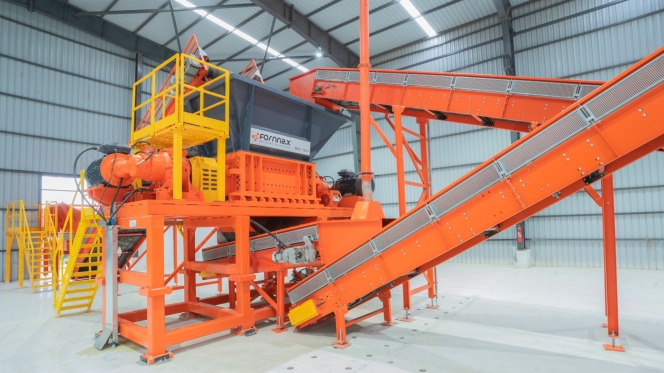
Fornnax has officially launched one of the world's largest integrated hubs for recycling innovation: a New Product Development centre and demo plant spanning over 12 acres. This facility is a critical milestone in the company's strategic vision to become a global leader in recycling solutions by 2030. It is designed to accelerate the advancement of recycling technology through a comprehensive, customer-focused approach.
The centre’s core function is its New Product Development framework, which is built upon a meticulous Gate Review Process. This system ensures precision from conception to completion. The journey begins with market research and ideation from the Sales and Marketing team, followed by a strategic review by the Leadership Team. The Design Team then creates detailed plans that are evaluated by Manufacturing, Service and Safety teams. After final approval, a functional prototype is built and subjected to a rigorous six to eight-month validation phase. The process concludes with design optimisation for mass production, officially launching the equipment for the global market. This method not just upgrades Fornnax's shredders and granulators – enhancing their capacity, energy efficiency and operational availability to 18–20 hours per day – but also validates the equipment for up to 3,000–15,000 hours under real-world conditions

A key feature of the facility is its open-door policy for clients. Customers can bring their specific materials to the demo plant to test equipment performance across various machines and conditions, providing a risk-free environment for informed investment decisions. The centre will also drive research into emerging recycling applications, such as E-waste, cables and lithium-ion batteries, where specialised engineering teams will conduct feasibility studies to design tailored solutions.
Beyond technology, the facility includes an OEM training centre dedicated to developing a skilled workforce. The programme trains operators and maintenance engineers, who gain hands-on experience before being deployed to support Fornnax's customer base. The company will also deliver comprehensive corporate training to domestic and international clients, empowering them with the expertise for optimal plant operation and maintenance. By uniting R&D, testing and training under one roof, Fornnax is establishing a powerful foundation to scale its offerings and lead the next generation of recycling technology.
Jignesh Kundariya, Director and CEO, Fornnax, said, "Innovation in product development is the key to success of becoming a global leader. With this new facility, we now have the speed, flexibility and controlled environment to design, test and validate new technologies in just six to eight months, something that would take significantly 4–5 years at a customer site. Each machine will undergo validation according to global standards, with every critical part and assembly rigorously tested under Engineering Build (EB) and Manufacturing Build (MB) protocols. Our goal is to empower customers with clarity and confidence before they invest. This facility allows them to test their own materials under real-world conditions, compare machines and see results firsthand. It’s not just about selling equipment; it’s about building trust through transparency and delivering solutions that truly work for their unique needs.”
Smithers to Expand Rolling-Resistance Testing Capabilities in China
- By TT News
- November 21, 2025
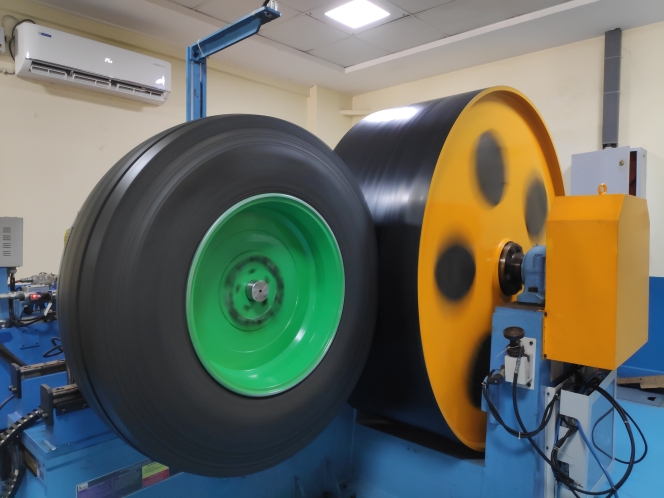
Smithers, the US-based testing and consulting group, is expanding its tyre testing operations in China with three new capabilities designed to better replicate real-world driving conditions. The investment will enhance the company’s rolling-resistance testing at its Suzhou tyre and wheel centre, strengthening its offering to global carmakers and tyre manufacturers.
The new features focus on factors that can influence vehicle energy loss, range, and overall efficiency—a growing concern as regulators tighten standards and EV makers push for longer driving range.
One new capability will allow rolling-resistance testing to be carried out with variations in slip and camber angles for passenger car and light truck tyres. Standard tests are performed at zero degrees, but even small changes in wheel alignment or body movement during real driving can affect energy consumption. The enhanced system lets customers study these effects and refine tyre designs accordingly.
Smithers is also adding high- and low-temperature rolling-resistance testing for truck and bus tyres, an extension of the temperature-controlled testing it introduced for passenger tyres in 2022. The company said demand has risen as manufacturers look to understand how cold weather affects range—a key issue for electric commercial vehicles.
A third new service will allow tyres to be tested together with chassis components such as half-shafts and brake discs. This gives OEMs independent data on how these parts contribute to overall resistance, helping them to identify where energy is being lost and to fine-tune vehicle efficiency.
All three capabilities are expected to be online by 1 December 2025.
“Smithers is seeing increased demand on a global scale for testing of tires and vehicles that more closely mimics real-world conditions,” said Derek Read, Vice President of Asia Pacific / Global Development, Materials Science and Engineering, Smithers. “These new capabilities are strategic investments into the refined, scenario-based testing our clients require to improve both tire and tire-chassis-vehicle system performance.”
Autonomous Robots Transform Continental Retreading Operations
- By TT News
- November 19, 2025
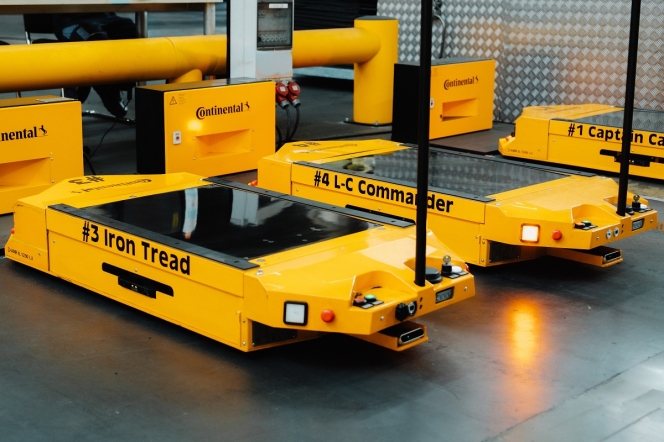
Continental's Hannover-Stöcken plant is pioneering a new era in sustainable manufacturing by seamlessly integrating advanced robotics into its core operations. Since their deployment in March 2025, a team of seven autonomous mobile robots (AMRs) has become the central nervous system for material transport, fundamentally reshaping the workflow for retreading truck and bus tyres.
This shift to automation has profoundly changed the human role on the production floor. Employees, once tasked with the physically strenuous job of manually moving heavy tyres using cranes and trolleys, are now focused on more cognitively demanding responsibilities. Their expertise is directed towards machine setup, process oversight and meticulous quality control, making their work more ergonomic and skilled.
The AMRs operate with sophisticated independence, navigating the production hall using a fusion of sensors, 360-degree cameras and AI-driven software. They efficiently ferry ‘green’ tyres between critical stages: from the building machine, where fresh rubber is applied, to the curing presses for vulcanisation and finally towards inspection. This automated coordination is digitally linked to the plant's order system, allowing for dynamic routing to optimise workflow and manage capacity.
This initiative is a cornerstone of Continental's global strategy to modernize tyre production through digitalisation and smart automation. The success in Hannover has already inspired the rollout of similar robotic solutions across the company's international network, from North America to Asia. The move aligns perfectly with the plant's sustainable mission, which is the ContiLifeCycle process itself. This process breathes new life into used tyre casings by carefully inspecting them, applying new tread rubber and vulcanising them to create a product that performs like new. The environmental benefit is substantial, as up to 70 percent of the original tyre's material is reused, significantly conserving resources.
The human element was crucial to the project's success. Continental ensured widespread employee acceptance through comprehensive training and even involved the workforce in christening the robots with creative names. This thoughtful approach has cemented the AMRs not as mere machines but as valued teammates in a shared mission to make tyre production more efficient, sustainable and future-ready.
Felix Hantelmann, head of the ContiLifeCycle plant, said, “Self-driving robots have been supporting our production workflow for six months now. They handle simple, repetitive transport tasks such as moving a tyre from one point to another. The robots are directly connected to our digital order system, so they know exactly where to go and how to coordinate with each other to get there. They are a valuable addition to our daily operations and help create a safe, efficient and ergonomically optimised production environment.”
Continental Deploys Vacuum Tech For Real-Time Tyre Wear Particle Analysis
- By TT News
- November 18, 2025
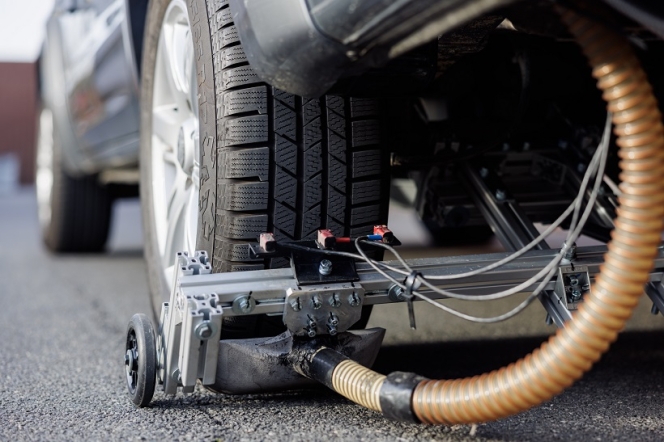
Continental's leadership in reducing tyre wear is fundamentally driven by its pioneering research into how particles are generated. A pivotal element of this strategy is the recently concluded OLRAP project, a collaboration with the Technical University of Braunschweig that broke new ground in real-world particle analysis. The research team engineered a complex experimental vehicle, outfitting it with a custom vacuum system and sensitive particle sensors. This innovative setup enabled the real-time collection and analysis of airborne particles directly at their source – the rolling tyre – under actual driving conditions. The resulting data, which for the first time correlates specific driving dynamics like aggressive acceleration and hard cornering with particle emissions, provides an unprecedented understanding of wear patterns.
This deep, data-driven insight is what directly fuels Continental's product development. By knowing precisely how and when wear occurs, engineers can make targeted optimisations to tread patterns and rubber compounds. The objective is to systematically design tyres that shed less material, thereby directly reducing their environmental footprint from abrasion. This development process rigorously maintains the critical safety and performance standards that drivers demand.
The tangible success of this research-to-development pipeline is confirmed by independent analysis, which shows Continental tyres abrade 11 percent less material than the competitor average. Furthermore, this proactive research and development strategically prepares the company for upcoming regulations like the Euro 7 standard, which will impose limits on tyre wear emissions. Beyond its own laboratories, Continental extends this commitment through cross-industry efforts, co-chairing the Tire Industry Project and contributing to public initiatives aimed at capturing tyre particles from road runoff. Through this integrated approach, Continental is leveraging fundamental scientific discovery to create more sustainable mobility solutions.


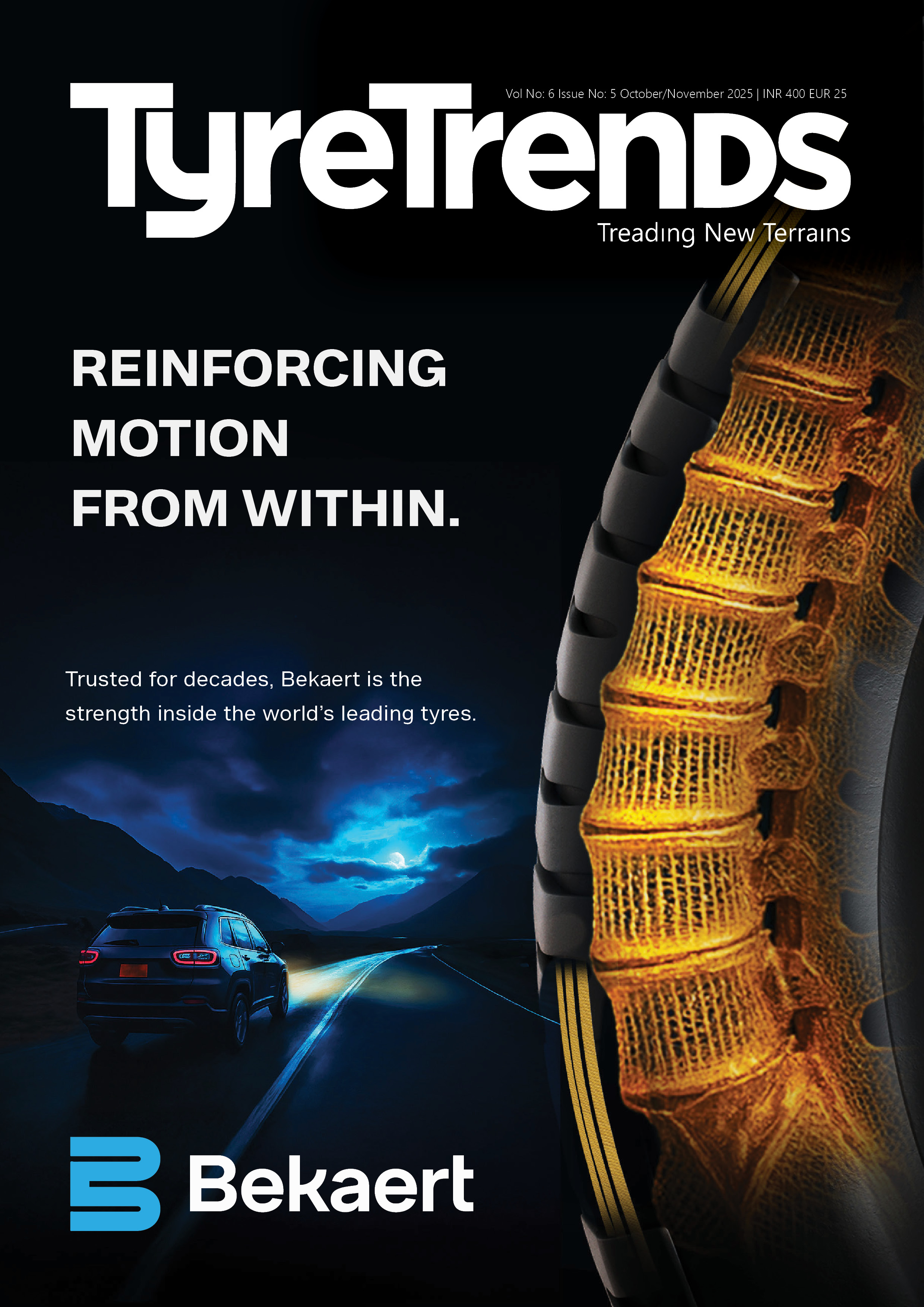




Comments (0)
ADD COMMENT